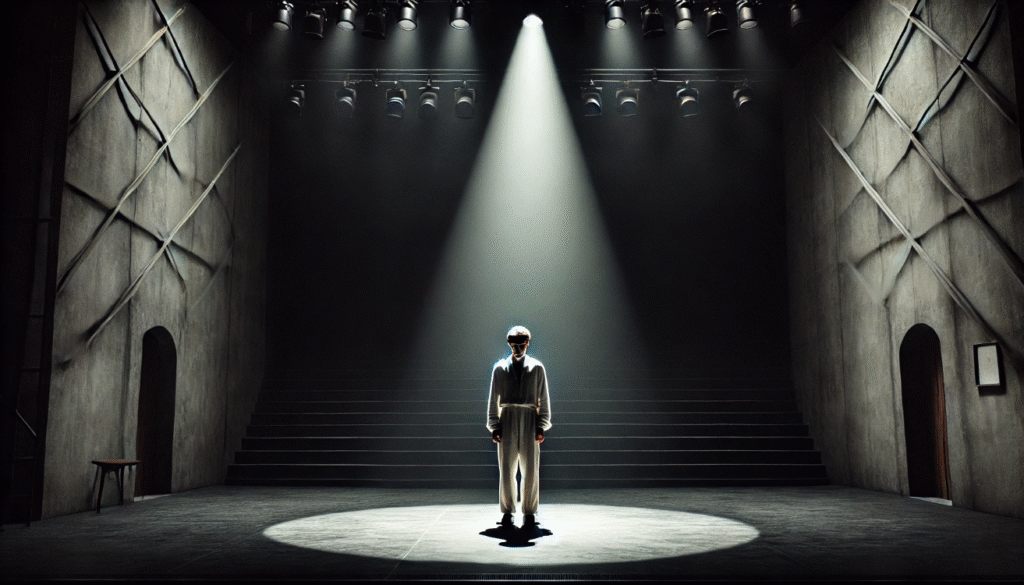 To be, or not to be, that is the question” – this famous line from Hamlet’s soliloquy is just one example of how Shakespeare’s use of soliloquies for character introspection masterfully uses soliloquies as a dramatic device. Shakespeare’s use of soliloquies for character introspection is a speech delivered by a character alone on stage, revealing their inner thoughts and feelings to the audience. This allows for a deep exploration of the character’s internal conflicts, providing insight into their emotions, motivations, and moral dilemmas. Shakespeare’s use of soliloquies for character introspection serve the purpose of adding depth to characters, allowing audiences to better understand their complexities and the driving forces behind their actions.
To be, or not to be, that is the question” – this famous line from Hamlet’s soliloquy is just one example of how Shakespeare’s use of soliloquies for character introspection masterfully uses soliloquies as a dramatic device. Shakespeare’s use of soliloquies for character introspection is a speech delivered by a character alone on stage, revealing their inner thoughts and feelings to the audience. This allows for a deep exploration of the character’s internal conflicts, providing insight into their emotions, motivations, and moral dilemmas. Shakespeare’s use of soliloquies for character introspection serve the purpose of adding depth to characters, allowing audiences to better understand their complexities and the driving forces behind their actions.
Understanding Soliloquies in Shakespeare’s Works:
Shakespeare’s use of soliloquies for character introspection, monologues, and asides are all dramatic devices used in theater to convey a character’s thoughts and feelings to the audience. A soliloquy is a speech delivered by a character alone on stage, revealing their innermost thoughts and emotions. It is a way for the character to express their true feelings without the presence of other characters. A monologue, on the other hand, is a speech given by a character to other characters on stage. It can be used to persuade, inform, or entertain the other characters and the audience. An aside is a dramatic device in which a character directly addresses the audience or speaks to themselves, but is not heard by the other characters on stage.
Soliloquies as a Window to Character Introspection:

Revealing Internal Conflict:
Shakespeare’s use of soliloquies for character introspection in literature and drama serve as a powerful tool to articulate internal conflict and moral dilemmas. By allowing characters to express their private thoughts and inner turmoil in a public setting, soliloquies provide insight into the juxtaposition of a character’s public persona and their true feelings. This allows for a deeper understanding of the character’s internal struggles and adds complexity to their moral quandaries. Through soliloquies, audiences are given the opportunity to witness the tension between a character’s outward actions and their inner turmoil, ultimately adding depth and complexity to the narrative.
Unveiling Emotional Depth:
Characters grappling with fear might be seen in horror movies, where the protagonist is facing a terrifying threat. Love can be explored in romantic dramas, where characters navigate the complexities of relationships. Guilt often plays a role in psychological thrillers, as characters confront their past actions. Ambition is a common theme in stories about success and achievement, while existential crises are often depicted in philosophical or thought-provoking films and literature. These emotional depths add complexity and relatability to characters, allowing audiences to connect with their struggles and triumphs.
Famous Examples of Introspection in Shakespeare’s Soliloquies:

These famous soliloquies from Shakespeare’s plays delve into deep and universal themes. In Hamlet’s “To Be or Not to Be,” he contemplates the meaning of life and death, and the fear of the unknown. Macbeth’s “Is This a Dagger” explores the conflict between ambition and conscience, ultimately leading to his descent into madness. Othello’s “It Is the Cause” showcases the tragic consequences of being torn between love and jealousy. Lastly, Juliet’s “Gallop Apace” captures the emotional anticipation and longing for love. These soliloquies offer profound insights into the human experience and continue to resonate with audiences today.
Techniques and Language in Shakespeare’s Soliloquies:
Shakespeare employs vivid imagery to reflect inner turmoil by using descriptive language that evokes powerful mental images, allowing the audience to visualize the emotional turmoil of the characters. This serves to create a deeper emotional connection and understanding of the complex inner struggles being depicted. In addition, Shakespeare utilizes rhetorical devices such as metaphors, antithesis, and repetition to convey complex emotions. Metaphors are used to compare one thing to another in order to highlight the intensity of the emotions being experienced. Antithesis is used to juxtapose contrasting ideas, creating a sense of conflict and tension within the text. Repetition is employed to emphasize key emotions and ideas, reinforcing their significance within the context of the play.
The Dramatic Function of Soliloquies:
Soliloquies are a valuable tool in storytelling that can create intimacy by addressing the audience directly. When a character speaks their thoughts and feelings aloud, it allows the audience to feel as though they are being let in on a secret, creating a sense of closeness and connection. Additionally, soliloquies can advance the narrative by revealing a character’s internal revelations, which in turn can shape the progression of the plot. By expressing their innermost thoughts and desires, characters can drive the story forward as their actions and decisions are influenced by these personal revelations. Furthermore, soliloquies can also be used as a form of foreshadowing events to come.
The Universal Appeal of Shakespeare’s Introspective Soliloquies:

Timeless Relevance: Shakespeare’s works remain relevant to modern audiences because they explore universal themes such as love, jealousy, power, and betrayal that resonate with people of all time periods. Psychological Realism: Shakespeare’s characters are known for their depth and complexity, reflecting the full range of human emotions and experiences. This psychological realism makes his work relatable to audiences across generations. Inspiring Later Literature and Drama: Shakespeare’s influence can be seen in the works of countless writers and playwrights who have been inspired by his storytelling, characters, and themes. His impact on literature and drama is immeasurable.
Shakespeare’s use of soliloquies in his plays allows for deep introspection into the minds and emotions of his characters. These monologues provide insight into their inner thoughts, motives, and conflicts, allowing the audience to develop a deeper understanding of the characters and their actions. Soliloquies also continue to resonate with audiences today because they tap into universal themes of human nature and emotion. The raw and honest portrayal of characters’ inner struggles and dilemmas allows for a connection with the audience, making the characters and their experiences feel relatable and relevant. I encourage readers to revisit Shakespeare’s plays to explore the depth of his soliloquies and appreciate the timeless significance of these introspective moments.













